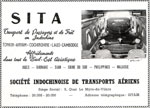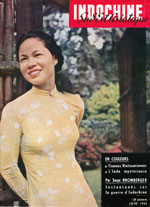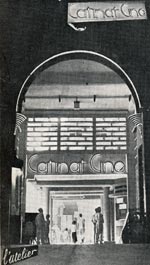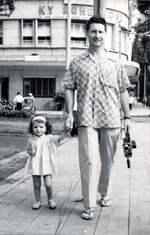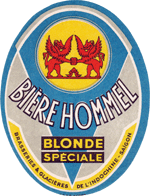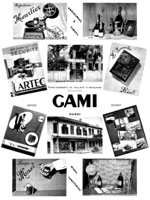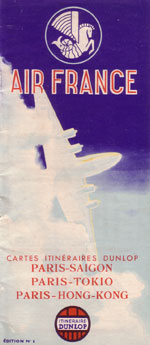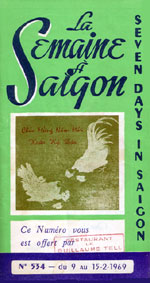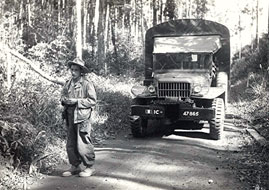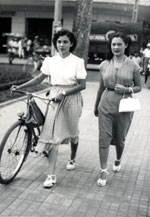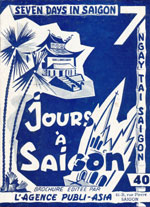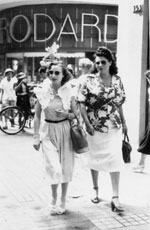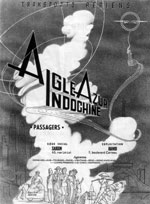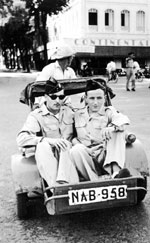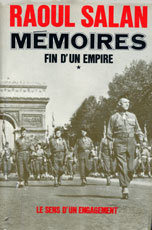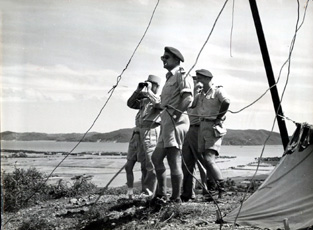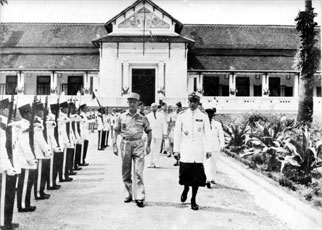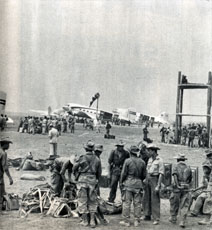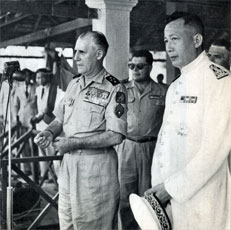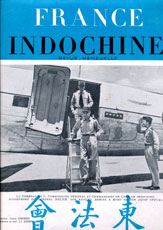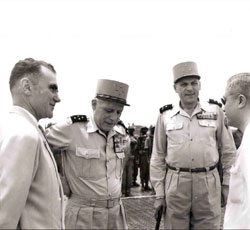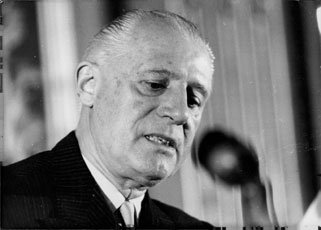

General Salan in Indochina
Left photo: The cover of Raoul Salanâs book, his âMemoirs of the End of an Empireâ â The sense of an Engagement.
Center photo: The cover of the monthly publication, âSouth Asian Indochinaâ â February 1953 â general Raoul Salan, Commander in Chief in the Far-East, decorating the banner of the tenth company of the third Foreign Infantry Regiment in Na San.
Right photo: Cover of Raoul Salan's book, âMemoirs of the End of an Empireâ â The viet-Minh, My Adversary, published in 1971 by the "Presses de la Cité" .
Raoul Salan was born June 10, 1899, in Roquecourbe (Tarn), and died July 3, 1984 at Val-de Grâce in Paris. He was a French general, and the most decorated soldier in France.
He signed up for the duration of the war on August 2, 1917, and was admitted to Saint-Cyr on August 21, 1917.
He became an officer-cadet on July 25, 1918, and was assigned to the fifth Colonial Infantry Regiment (RIC) in Lyon on August 14, 1918.
He was section head of the 11th compant and participated in battles in the region of Verdun (Saint-Mihiel, Les Eparges, Bois-Bourru, Côte de lâOie, Le Mort-Homme).
Received the Brigade citation on December 29, 1918:
"An excellent section chief who distinguishes himself at all times by his enthusiasm and bravery. During the last operations, and under a violent barrage of fire, he took all judicious measures to maintain his men who amire him for his calm and composure."
"In 1924 he leaves for Indochina where he will serve several tours until 1937 as a lieutenant at different posts on the Chinese border and in the Laotian province of the Upper Mekong.".
In 1924 he leaves for Indochina where he will serve several tours until 1937 as a lieutenant at different posts on the Chinese border and in the Laotian province of the Upper Mekong. He returns home on April 8, 1937 aboard the Chenonceaux. Heâs detached to the Ministry of the Colonies on September 1st, 1937, as adjutant to the 2nd bureau, and is promoted to the rank of battalion chief on March 22, 1938, becoming the head of the Intercolonial Intelligence Service and conducts a secret mission to Cairo and Khartoum in autumn of 1939 after France declared war on Germany, with the assistance of the Abyssinian resistance, against the occupation of Ethiopia by Italian troops.
He returned to Paris on November 19, 1939. In January 1940 he took command of the 44th Regiment of Senegalese Mixed Colonial Infantry.
He is then detached to the headquarters of the Colonies, to the secretariat of State of the Colonies at Vichy on July 16, 1940. He is promoted to lieutenant-colonel on June 25, 1941.
He took command of the 6th regiment of Senegalese Rifles in Corsica on May 30, 1944..
He took part in the invasion in Provence at the head of his regiment with which he landed on August 19, 1944, on the beach of La Nartelle in the Var. He reached Toulon on August 26, 1944.
Raoul Salan was promoted to general on December 25, 1944 at the age of 45
On February 20, 1945 he took command of the 14th Infantry Division and saw the war end in Germany, at Konstanz.
"At the request of General Leclerc, he is appointed commander of forces in China and Northern Indochina in October of 1945. While commanding the colonial forces at the end of 1950, General de Lattre de Tassigny calls him to Indochina and makes him his ooperational adjutant and then Commissioner of the Republic of North Vietnam.
Following the death of General de Lattre de Tassigny on January 11, 1952, he became commander of French forces in Indochina. He left Indochina on May 28, 1953, on board the steamship "La Marseillaise".
he concentrated on applying the Geneva Accords. In disagreement with General Ãly, he left Indochina for good and boarder the steamship "Viet-Nam" on October 9, 1954.
Following the amnesty voted by Parliament in 1982, his rank of General of the Army and Grand-Croix and Legion of Honor were restored.
Only General Salanâs time in Indochina will be discussed here.
General Salanâs decorations

- French decorations:
Légion d'honneur - Chevalier le 5 avril 1922 - Officier le 21 août 1940 - Commandeur le 10 février 1945 - Grand officier le 27 octobre 1948 - Grand croix le 28 août 1952.
Médaille militaire : Croix de guerre 14-18 1 citation, Croix de guerre 1939-1945 8 citations, Croix de guerre TOE 7 citations, Croix de la Valeur militaire 1 citation, Croix du combattant volontaire 1914-1918, Croix du combattant, Médaille coloniale agrafe Extrême Orient, Ordre de l'Ãtoile noire, Grand Croix Ordre du Dragon d'Annam, Grand Croix à titre militaire, Ordre royal du Cambodge.
Grand Croix, Ordre du Million dâÃléphants et du Parasol blanc, Grand Croix Ordre du Mérite civil Taï, Grand Croix Ordre du Dragon d'Annam Grand Croix à titre civil, Ordre du Nichan Iftikhar Grand Croix, Ordre royal du Cambodge Officier, Ouissam alaouite Grand Croix.
Ordre de l'Ãtoile d'Anjouan Grand Croix, Ãtoile des Comores Grand Croix, Médaille de l'Aéronautique, Ordre royal Muniseraphon du Cambodge, Croix de la bravoure vietnamienne 1 citation, Médaille de la Défense nationale du Cambodge.
Médaille commémorative de Syrie-Cilicie, Ordre du mérite syrien, Médaille interalliée 1914-1918, Médaille commémorative de la guerre 1914-1918, Médaille commémorative de la guerre 1939-1945 avec agrafes Afrique, Italie, France, Allemagne, Insigne des blessés militaires, Ordre du Mérite militaire d'Annam.
Ordre du Règne du roi Savang Vatthana, Ordre du Mérite Militaire Thaï (1950-1954), Médaille commémorative de la campagne d'Italie 1943-1944, Médaille commémorative de la campagne d'Indochine
Médaille commémorative des opérations de sécurité et de maintien de l'ordre en Afrique du Nord avec l'agrafe Algérie.
- Foreign decorations:
Distinguished Service Cross, Commandeur de l'Ordre de l'Empire britannique, Campagne du Vietnam (Thaïlande), Mérite Militaire Sena Jay Assed (Cambodge).
Source : Wikipédia
The Indochina adventure of General Salan
who would be nicknamed "The Mandarin".
After the Great War, the occupation of the Ruhr, Lebanon and Syria, he was severely wounded on October 21, 1921, at Accham and was hospitalized in Aleppo where General Gouraud presented him with the Legion of Honor.
At the end of January 1922he was sent to the hospital at Val-de Grâce and received the treatment which necessitated the paralysis of his right arm while on light duty at the Lourcine barracks, located on the Boulevard Port-Royal in Paris, with the 23rd Colonial Infantry Regment. He learned of his posting to Indochina on January 2, 1924, by the Official Journal.
Aboard the "Compiègne" in 1924

"On March 10, 1924, I boarded the âCompiègneâ at Marseille⦠...
After a one-day layover in Saigon I learn that I have been called to serve at the Nguyen Binh station. I disembark in Haiphong on April 15 after a pleasant 5-week crossing. I pass through Hanoi, from where I depart for Bac Ninh, where the central part of my regiment is located. I leave Bac Ninh by train, for Langson. Arriving that same evening I stay at the âHôtel des Trois Maréchauxâ, named after Joffre, Galliâsni, and Lyautey. The day after that I went through Dong Dang, Nacham, That Ké, and Dong Ké by road.
The next day at dawn, in a car driven by a Chinese merchant, I leave for Nguyen Binh, about 50 kilometers from the capital. Upon my arrival at the station which is well situated above the village and the plain, I am received by captain Garin, my new commanding officer. In addition to command of the company, he assumed the functions of administrative delegator, actually the sub-prefect of this very diverse region where Man Coc Montagnards, Thôs, the ethnic majority, the still-numerous Annamites, amd the Chinese.
My arrival is well-received by the non-commissioned officers and the troops. I am given several administrative tasks, and in particular I am in charge of recruitment of personnel for the tin mines, because Tinh Tuc and Beausite are part of our territory. This was my beginning in colonial administration. I would remain there until 1937."
Laos â The Upper-Mekong

"I left Nguyen Binh on December 14, 1924, having been appointed administrative delegate to Muong Sing, serving in a civil capacity; as there was no military presence there. I would depend directly on the ranking resident at Vientiane and his head of the province of the upper Mekong. I spent several days in Hanoi to organize my equipment and then I traveled by train to Vinh where I hired a car to drive me to Thakhek on the Mekong to allow me to reach Vientiane.
An important fact is to be noted on this journey from Vinh to Thaktek. In my car there are also two Frenchmen, pretty taciturn at the beginning. I did them a little favor at the bungalow at Napé, because the manager, an old legionnaire, did not want them. Itâs December 24th, and after a few kind words, he agrees to lodge them.
Itâs only the next day that they confess to being security inspectors and that they are going to Vientiane to provide security for the Governor-General, Merlin.
I learned that Monsieur Merlin was the target of a bombing in Canton in the beginning of December. It was an unusual event, they said, the perpetrator of which is a certain Nguyen of the Third International, who actively participates in the worldwide communist revolutionwith the backing of the U.S.S.R. Both inspectors have, among other things, been tasked to find a small brochure on the participation of the people in the world communist revolution, written by the same Nguyen Ai Quoc , "The Trial of the French Colonisation".
Strange coincidence, that this name should be spoken to meâ¦later on, Nguyen Ai Quoc would take the name Ho Chi Minh."
He was promoted to captain March 25, 1931, and left Indochina April 28, 1933.
Captain Salan at Dinh-Lap
Left photo: Captain Raoul Salan at the military camp in Dinh-Lap, in the company of friends on the terrace of his quarters. Captain Salan is crouching in the center of the photo.
Right photo: Raoul Salanâs wife is Lucienne and they have two children, Victor, born March 23, 1932, in Muong Sing (Laos), and Dominique, born March 15, 1946, in Hanoi. In the photo, Victor Salan, with Renée Chazeau on the left and her sister Odette Chazeau on the right and in the middle, Madame Chabert, wife of Captain Chabert. .
©Many thanks to Christian Marjadou for these photos from his personal collection.
Back in Indochina on October 6, 1934, Raoul Salan takes command of the 6th company of the 19th mixed Colonial Infantry and becomes the administrative delegate of Dinh-Lap in the Tonkin.
He would return to France on April 8, 1937, aboard the steamship "Chenonceau".
End 1945, General Salanâs return to Indochina
Left photo: By appointment of Admiral Argenlieu dated 1 November 1945 Brigadier General Salan, nicknamed "The Mandarin" was appointed to the Command of French troops from China and Tonkin, he reports directly to Army Corps General Senior commander of the troops in the Far East.
Right photo: General Chanson in discussions with General Salan to Saigon in March 19511.
General Chanson would be assassinated July 31, 1951 at Sadec Caodaist by a dissident who threw a grenade during a review of the troops. He died the same day at the military hospital in Vinh-Long.
The steamship "Maréchal Joffre" back in Haiphong

After the Japanese occupation, le "Maréchal Joffre" is the first ship of the "Messageries Maritimes" to anchor in the port of Haiphong in July 1946.
The wife of General Salan and his daughter Dominique, accompanied by the Chazeau family leave Hanoi to embark in September 1946 on the "Maréchal Joffre" in the port of Haiphong with a destination of Marseille.
Arrival in Saigon on December 17, 1950

Arriving in Saigon at Tan Son Nhut airport, General de Lattre de Tassigny followed by General Salan, leave the plane in white uniform with the insignia "Rhine and Danube".
In the plane from Saigon to Hanoi, December 19, 1950
On the flight from Saigon to Hanoi General de Lattre reads to General Salan the speech he will deliver the evening at the Maison de France to officers and NCOs:
-"Good evening, my friends! I have come to save you because it is you who are getting yourselves killed. I will now be continually with you. There will be no more abandonment. Tonkin will be held. We will maintain...
From now on you will have leadership."
General Salan visits the wounded in Hanoi in 1952
At Lanessan hospital in Hanoi, General Salan visiting wounded soldiers in January 1952. The military surgeon Jacques Aulong would see many wounded in combat, in particular those who were evacuated from Điện Biên Phủ tant que la voie aérienne l'a permis.
Inaugurated in 1894 by the Governor of Indochina Jean-Louis De Lanessan former naval doctor, Hanoi hospital on Gambette Boulevard (Hông Duc in 1945 after Trân Thanh Tông in 1946) originally had 450 beds. It was named Lanessan in 1928.
Lanessan Hospital would close in 1954, after the Geneva Accords to become "303 Hospital 303" and "Hospital of the Soviet Red Cross".
H.M. Bảo Đại and General Salan in Dalat, April 1952
At the "Hoang Dieu"promotion ceremony, at the school of Managers in Dalat, His Majesty, Emperor Bao Dai reviews the cadets, followed by General Salan (commander in Indochina) and Mr. Tran Van Huu (Chair of Vietnam). Date: April 1952..
Quốc trưởng Bảo Đại duyệt hà ng ngũ các SV sĩ quan, theo sau là Tướng Salan (Tổng tư lệnh tại Đông Dương) và ông Trần Văn Hữu (Thủ tướng Việt Nam) trong lễ mãn khóa Khóa 5 Hoà ng Diệu tại trường Võ bị Đà Lạt, (Tháng 4/1952).
His Majesty the Emperor Bảo Đại gives the valedictorian saber presented by the French alumni of Saint-Cy..
American aid to Indochina in 1952

On the occasion of the arrival in the port of Saigon in June 1952 of the 150th US aid ship in Indochina, General Salan gave a great speech, thanking Mr. Donald Heath, Ambassador of the USA in Saigon 1950-1955 to the associated states (Laos, Cambodia and Vietnam).
Return of Jean Letourneau to Saigon in 1952

Jean Letourneau returned to Saigon on July 4, 1952. The Governor General Gautier, General Salan, Raymond Janot, director of the firm, greeted him upon landing.
The Minister said: "During my missions in Indochina, in Washington, and London, I stressed the determination of France and of the Associated States in pursuit of the struggle and that France will continue to defend these countries"
Hanoi in 1952
Left: General Salanâs residence in Hanoi in 1952, his car shows 4 stars.
Right: Bridge at the gates of Hanoi (1,700 meters long) is the best-defended structure in the country, in the foreground: an anti-aircraft battery. It was never used..
The battle of Na-Sam in 1952
His Majesty Bảo Đại who with General Salan Commander-in-Chief to his right, went to Na-Sam to congratulate the defenders of the entrenched camp and visit the positions, accepted the invitation of Colonel Gilles to spend some time in his "mess".

The battle of Na-Sam took place from November to December 1952 with a victory of the French forces under the command of Colonel Gilles. Giap admits defeat December 4, 1952 and withdrew his divisions.
Left: Weekly Review Paris-Match - march 6, 1952 with general Salan on Na-Sam airfield.
Right: At Phuc Nhac airfield, (whose Vietnamese name means "the world of the beatitudes"), dignitaries fly to the quieter town of Niam-Dinh to escape the battle.
The arrival of Pierre Montel in Hanoi, December 15, 1952
In the picture, from left to right General Raoul Salan, Pierre Montel, Secretary of State for Air in Antoine Pinay's Government, General Lionel-Max Chassin, Commander of the Air Force in Indochina, General Antoine de Linares on the occasion of the arrival on December 15, 1952, of the Secretary of State at Bach Mai Airport in Hanoi.
In his memoirs, General Salan relates his interview with Pierre Montel:
"I know that I have been the object of strong criticism on the part of his staff that deems abusive the job I am doing for aviation. Mr Montel replied that everything will be done to maintain aviationâs effort. The minister even went to Na-San, and at the end of his inspection in Tonkin on December 17, he assured me of his full support and promised to send me additional mechanics shortly. I was successful here ...
When he left Paris, Mr. Montel was reticent, today he is with us."
General Salan goes to Qui Nhơn , February 3rd, 1953
On February 3, 1953 General Salan went to Qui NhÆ¡n (Bình Äá»nh Province).
French troops land at Qui Nhơn from the aircraft carrier "Arromanches" and reoccupy the city, they force the Vietminh to stop its offensive.
General Salan visits a dispensary in Qui Nhơn that was set up by French troops. "Benh xa Nhan dan".
On the runway at Saigon airport in 1953

On 15 February 1953 on the runway at Tan Son Nhut Airport from left to right: Governor Gautier, General Bondis, Maréchal Juin, General Salan, General Nguyễn Văn Hinh.
Arrival at 9:00 February 15, 1953 of Marshal Juin in Saigon for a meeting with Bảo Đại, he returned to Tokyo on February 18 for talks with General Clark and an inspection of the French troops in Korea. He returned on 25 February to Tourane, for a visit to the Queen Mother in Hue. On the 26th he went to Dong Hoi in Annam and then to Tonkin in the delta. On February 28 he went to Na Sam where Maréchal Juin awards the Legion of Honor to Colonel Debernardy and General Salan, and the Croix de Guerre to General de Linares.
Left: General Bondis, commander of French troops in South Vietnam from September 1951 to June 1953.
Center: General Salan.
Right: Maréchal Juin inspecting of French troops in Indochina.
The Vientiane Conference in 1953
On Thursday, May 7, 1953, conference in Vientiane. On the photo from left to right the head of the provisional government of Laos, General Salan, Jean Letourneau, Minister of Relations with the associated States.
General Salan reviewing the Royal Guard of Laos
General Salan with H.R.H. Savang Vatthana (President of Lao Council) reviewing the Royal Guard of Laos, May 8, 1953.
On May 19 Prince Savang Vatthana presents the vermeil medal of the Kingdom to General Salan on behalf of King Sisavang Vong.
The Viet Minh invasion of Laos
The battle of the Plain of Jars in 1953
Left picture: From late March 1953 to May 9, 1954 the Battle of the Plain of Jars was fought in Laos, this was the date of the Vietminh downturn.
Right picture: General Salan went to Luang Prabang to take measures necessary for the situation with H.R.H. Savang Vatthana, representing king Sisavang Vong. (Savang Vatthana was the last king of Laos, from 29 October 1959 to 1 December 1975).
Parade in Saigon
Parade of French troops in Saigon. In the foreground on the stage: the governor Gautier, Minister Jean Letourneau, generals Salan and Cogny.
The arrival of General Navarre

General of the Army Henri Navarre succeeds General of the Army Raoul Salan, commander in chief of the troops in Indochina.
© Indochina South East Asia - June-July 1953
"On May 27, 1953, at midnight, Iâm relieved of my responsibilities and on May 28 at midnight, General Navarre took over as commander in chief in Indochina.
That same May 28, after a successful show and a flawless presentation of the troops commanded by General Bondis, I head for the docks, at 11 am embarked on La Marseillaise. Many people have expressed their regrets to see me go and bid me well.
... At noon, the ship sets sail. We leave this land that holds my affections and from which I cannot take my eyes until we get to sea.
General Linares and Colonel Gracieux are also on board. Weâre on our way to France!
After an excellent and very relaxing trip, Notre Dame de la Garde finally appears and we dock June 15.
At the moment of my arrival, an officer gave me a message from René Pleven, Minister of National Defence:
"When you return to France, I wish to extend to you, on my behalf and on behalf of the whole army, my warm congratulations on the fantastic way in which you have insured your command at the head of troops in Indochina. Your task was tougher and harder and you did it well, showing leadership qualities and showing the finest military virtues. I thank you and beg you to believe in my feelings of gratitude for the work you have done".
The Indochina Veterans with their flag and Colonel Mirambeau, president of the association, are there to welcome me.
I am very happy.
Raoul Salan "Memoirs of Empires" 1981
After the fall of Dien Bien Phu May 7, 1954 and pending the Geneva agreements. on May 13 General Salan and General Pélisier are designated to be part of a fact-finding mission headed by General Ely, general chief of staff of the armed forces. From 15 to 25 May 1954 the fact-finding mission will assess the catastrophic plight of French troops in North Vietnam. On May 25, General Ely would immediately be received by the Council President Joseph Laniel.
The Secretary of State for War Pierre de Chevigné appoints the General of the Army. Salan, meanwhile, serves as Acting Commissioner General and commander in Indochina whenever General Ely is called to leave the territories of the Associated States.

General Salanâs return to Vietnam
Monthly Review France Indochine - 20 rue de la Boétie Paris VIII - July 1953
President : René Pleven.
Director: Francis Fontreide, Editor: L. F. Eckert
Cover: General Ely, Commisaire General and Commander in Indochina, accompanied by General Salan, his deputy, arrived on board his special plane.
Unsigned article appeared in France - Indochina 1 July 1954:
Mr Ngô Ãình Diêm succeeds Prince Buu Loc.
On 15 June 1954 President Buu Loc having finalized the negotiations opened following the French statement of 3 July last year, telegraphed to HM Bảo Đại in Cannes that he expected to see a new team assume power, adapting it to the new data of the internal and external conditions. The Head of State thanked Prince Buu Loc for the way he had fulfilled his task, accepted his resignation and designated Mr. Ngô Ãình Diêm to form a new government.
"In such a time, said HM Bảo Đại in a message to the people of Vietnam, such a choice says it all. I know this designation will find, that throughout Viet Nam, no one is unaware of the titles describe the new president. All this will be necessary in an almost symbolic task of galvanizing, binding, and grouping national energy. He accepts this role, and it is up to the country to come together unanimously. We will show that we have understood the bitter consequences of the Geneva Conference".
Left photo: General Paul Ely and Council President Ngô Ãình Diêm in 1954.
Right photo: On 19 January 1955 the Council President Ngô Ãình Diêm and General Ely to Hưng Long pagoda in Cholon for a Buddhist ritual in memory of the war dead in Indochina.
Ngô Ãình Diêm succeeds Prince Buu Loc
The new Chairman of the Board, Mr. Ngô Ãình Diêm, , is a native of Vietnam Centre. The third son of a former minister of the Emperor Thanh Thai, he is 53 years old. He entered government at an early age and rapidly rose in the ranks. At 32 he became Prime Minister for the Interior Department. He immediately asks that reforms be aimed both to modernizing the country and easing the Protectorate and also real participation of the people in the management of public affairs. He was not understood, and retired to private life while remaining in close contact with the heads of various nationalist movements.
After the Japanese surrender he refused to compromise with the Vietminh and also declined the offer made to him in 1949 to form the Government. Since 1950 it has sent, in particular in the United States. He is Catholic, and the brother of Archbishop Ngo Din Thuc, Bishop of Vinh Long and also of the leader of the Ngo Dinh Nhu Christian union. Another of his brothers was executed by the Viet Minh in 1945. His reputation for integrity on the other hand, is well established.
In his statement of June 18, 1954 before heading to his post he notably said:
"The intransigence, which in the past, made me refuse the power never meant a willful ignorance of unpleasant realities or deliberate hostility to the legitimate interests of a friendly country. They caused a sincere conviction, shared by all the people that both national ideals can not be accurately and first served as a matter of priority, with all efforts and skills deployed, far from benefiting the people, will only deceive, divide, demoralize and make inextricable the solution to an already difficult problem ."
General Salanâs Impressions of Ngô Ãình Diêm
"... Meanwhile, Mr. Ngô Ãình Diêm, arrives in Saigon as the new head of the Vietnamese government. He never was friendly but I welcome him nonetheless to the area since I am acting commissioner general. He has a detestable demeanor, aloof, without human warmth ... I see right now that we will never hear us, which is confirmed in the conversation that I have with him and in which he voices his disapproval about any pullback in the Tonkin delta.
He criticizes the French army and becomes so odious that I must leave so as not to slap him. My old companion Allard is sickened. We part on a handshake that bodes well for our future relationship ..."
During the coup of November 2, 1963 the morning, Ngô Ãình Diêm and his younger brother Ngo Dinh advisor take refuge in St. Francis Xavier Church in Cholon, they will be summarily murdered by officers in the back of an armored vehicle transporting them to the air base of Tan Son Nhut.
Warships Arrive in Saigon in 1954
General Salanâs return to Hanoi
"General Salan was received at the airport by the General Cogny, commander F.T.N.V. (Land Forces Northern Vietnam), H.E. the Governor of North Vietnam Nguyen Huu Tri, and Mr. Comrain, Delegate General in North Vietnam of the High Commissioner of France in Vietnam. Armed troops rendered honors.
The appointment of General Ely and General Salan was welcomed in Indochina. There was consensus that this dual choice was the best possible under the circumstances, that is, in the absence of Maréchal Juin.
General Salan has irreplaceable knowledge of Indochina, insight into Indochinese problems, and knowledge and confidence of the people of this country. The stagnation that had been criticized lately for its strategy by irresponsible critics retroactively appears as a wise and lucid in assessing the balance of power. Time seems to have justified the theories of Salan, including its views on the Vietnamese army and the same ideas he had expressed to the authorities in 1947.
Salan is the French general who knows best the traditional Asia of monks and mandarins, and also the new Asia westernized by communism, though probablymore impervious to the West than that of the Boxers and Black flags.
It is not sure that against Ho Chi Minh, Salan, who would have been an excellent negotiator in 1947, could regain the chances of eight years earlier: the Communist diplomacy disregards the needs of people. But it is certain that the Vietminh will never find a partner as sentimentally eager to avoid the atomization of Vietnamese territory - a French patriot also attached to the deep interests of Vietnam. It is a fact that should give pause to the Vietnamese from all sides. De Lattre loved the youth of Vietnam, he saluted it, and hoped to bring forth a great future for this country with it.
Salan loved Vietnam and recognized in Vietnam his own youth, his past, and spent twenty years of his life there. It is an unwritten but invaluable warranty for Vietnam, when his fate is played out.
by Simon Mays
Article paru dans le mensuel "Indochine Sud Est Asiatique" juillet 1954.
The General Salan back in Indochina in 1954.

The release of Geneviève de Galard
Điện Biên Phủ heroine
Left photo: May 24, 1954 press camp of Hanoi, at his typewriter, Lucien Bodard, with his dark glasses, collects the testimony of Geneviève de Galard heroine of Điện Biên Phủ.
Right photo: Geneviève de Galard, received the aeronautics medal the medal of honor of the Health Service on 4 June 1954 in Paris.
Generals Cogny and Salan
Left photo: General René Cogny, born April 25, 1904 in Saint-Valéry-en-Caux (Seine-Martime, died September 11, 1968 off the coast of Nice in a plane crash (Caravelle flight No. 161 Company: Air France) Polytechnician, Political science degree, Director of Law, former rugby player, prisoner during the second World war, escaped. Deported to the internment camp at Dora. Cogny commanded a French division in Tonkin and mobile group in the Red River delta. in May 1953 Navarre replaced Salan, who was returning to France with all the General Lattre team except Cogny who agreed to replace General de Linares in command of the troops of Tonkin, with, as a reward, a third star.
On 3 June 1954, replacing Navarre by Paul Ely, with Raoul Salan as Military Assistant (Ely also replacing Maurice Dejean as High Commissioner in Indochina) allowed Cogny to remain at the head of Tonkin forces. From May to July, he organized an effective defense against the assaults of the Vietminh. His command ended in May 1955 with the withdrawal of French forces from Tonkin in compliance with the Geneva accords of 20 July 1954.
Right picture: On 31 July 1954 generasl René Cogny and Raoul Salan are on an inspection tour on Colonial Route No. 5.
"I asked that the line should pass well north of Colonial Road No. 9, the Lao axis, believing that we should hold in Dong Hoi, about fifty kilometers north of the fixed line.
It didnât happen and the implementation of agreements took place on the scheduled dates. I have the painful task of visiting Moncay, July 29, 1954, to coordinate the evacuation of my old friends, our Nung skirmishers, from the territory where I had served from 1934 to 1937. Colonel Vong A Sang, their commander, assisted by Jacques Achard, an intelligent, active and effective admnistrator, receives me. The majority of the population, twenty thousand souls, is relocated to the region of Phan Ri, at the seaside in South Annam where I provide material assistance. They were grateful for this and, supported me during the trials that I will suffer later".
Generals Cogny and Salan in Hanoi in 1954
In this photo taken Oct. 4, 1954 Generals Raoul Salan and René Cogny close the French cemeteries, that of "Conquest" and the more recent one, where all the dead soldiers lie. Brief ceremonies are held and a Mass is said in the church of the Martyrs by Father Simonet.
"On the evening of 4 October 1954, after being saluted by the troops and the officers who had all come to the Gia Lam field, I left this land of Tonkin where I had arrived for the first time in 1924.
What a heartbreak!
General Ely is returned on 6 October. I let him know him immediately that I will sail for France on October 9 aboard the "Vietnam".
General Ely remains an enigma to me."
Bugout in the delta amid "Deep Emotion"
Quân viễn chinh Pháp rút khỏi Hà Nội
On the roads and airstrips of the Hanoi delta last week a tragedy of nightmarish proportions and possibly cataclysmic consequences was played out of the rice-rich delta area without a fightn, abandonning 1,600 miles and 2 1/2 million Vietnamese to the Vietminh, a sickeningly familiar look. The wealthy and the influential tried to bribe their way onto evacuation planes. The poor and lowly slogged along roads behind overloaded push carts. The sun-hatted wives and chidren of Vietnamese soldiers crowded into the back of army trucks headed for airports and the uncertain safety of Hanoi and Haiphong.
There was not room for everybody and most people had to stay behind and take their chances with the Communits.
What made the tragedy worse was that the evacuated area contained the most resolutely anti-Communist Vietnamese, including more than a hallf-million Christians. Their abandonment caused Vietnem Premier Ngô Ãình Diêm, a Roman Catholic, to protest the withdrawal as "causing "deep emotion among his people.
The French insisted that the retreat was undertaken to improve their military position. But Washington suspected that was GIs would call a bugout from the southern delta really a dipplomatic bugout at Geneva.
Once again a major position, probably the most significant in Asia since the fall of Shangai, was lost as a result of the paralysing incapaciy of the free world to get together in the face of the commun enemy.
© Life July 12, 1954
Photo taken May 18, 1955 of the arrival of Viet-Minh troops in Haiphong; in the foreground, French Gendarmes.
Return to civilian life
Left photo: At the end of the 50's General Raoul Salan.
Right photo : General Salan in 1962 : return to civilian life.
"It's through the loss of Indochina that the foundations of the French Empire were undermined. Losing an Empire, is to lose oneself, to remove all meaning from a man's life, from the life of a builder."
Raoul Salan - June 28, 1971.
Bibliography â The writings of Raoul Salan
- Reading Manual "lue" and "Youne" for the use of pagoda schools of Upper Laos
Imprimerie de l'Extrême- Orient - Hanoi
- Memoirs of the End of an Empire (4 volumes)
Presses de la Cité Publishing, 1970-1974
* The meaning of a commitment, in 1970
* The Vietminh my opponent, 1971
* French Algeria 1972
* Algeria, de Gaulle, and me, 1974








